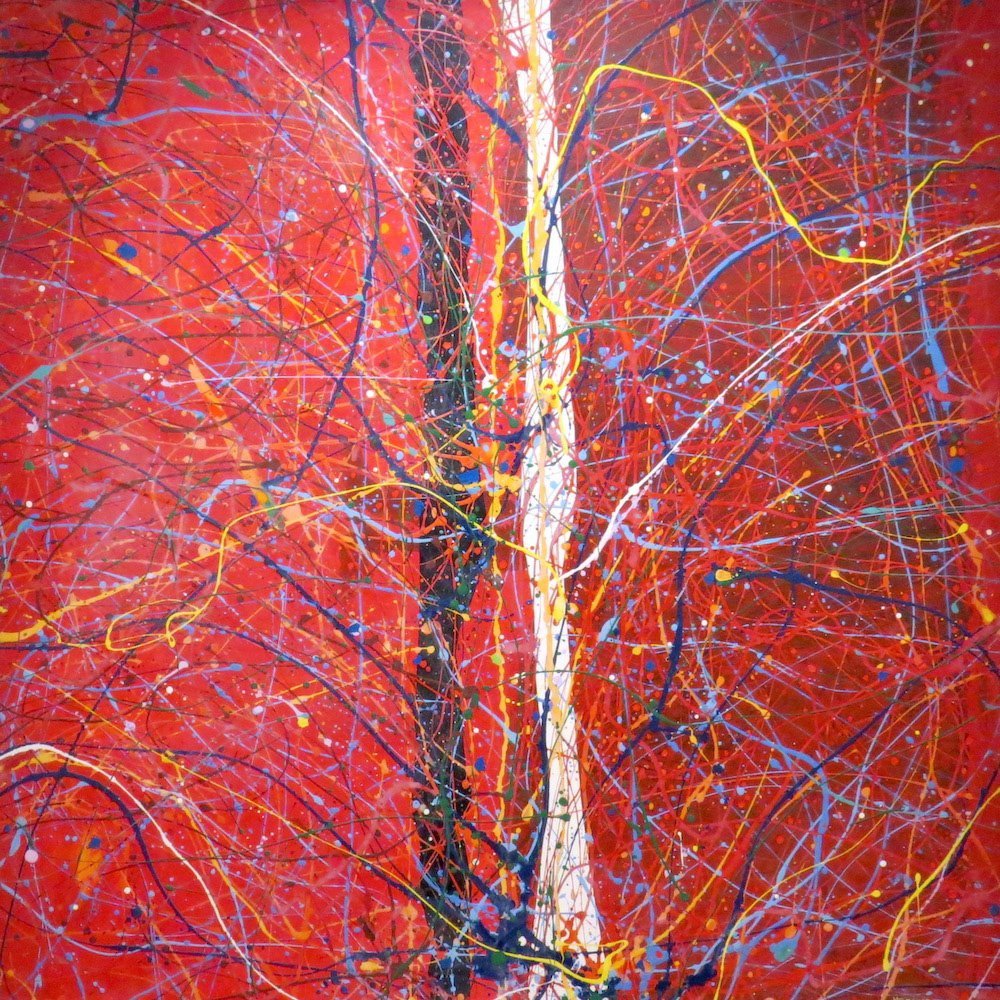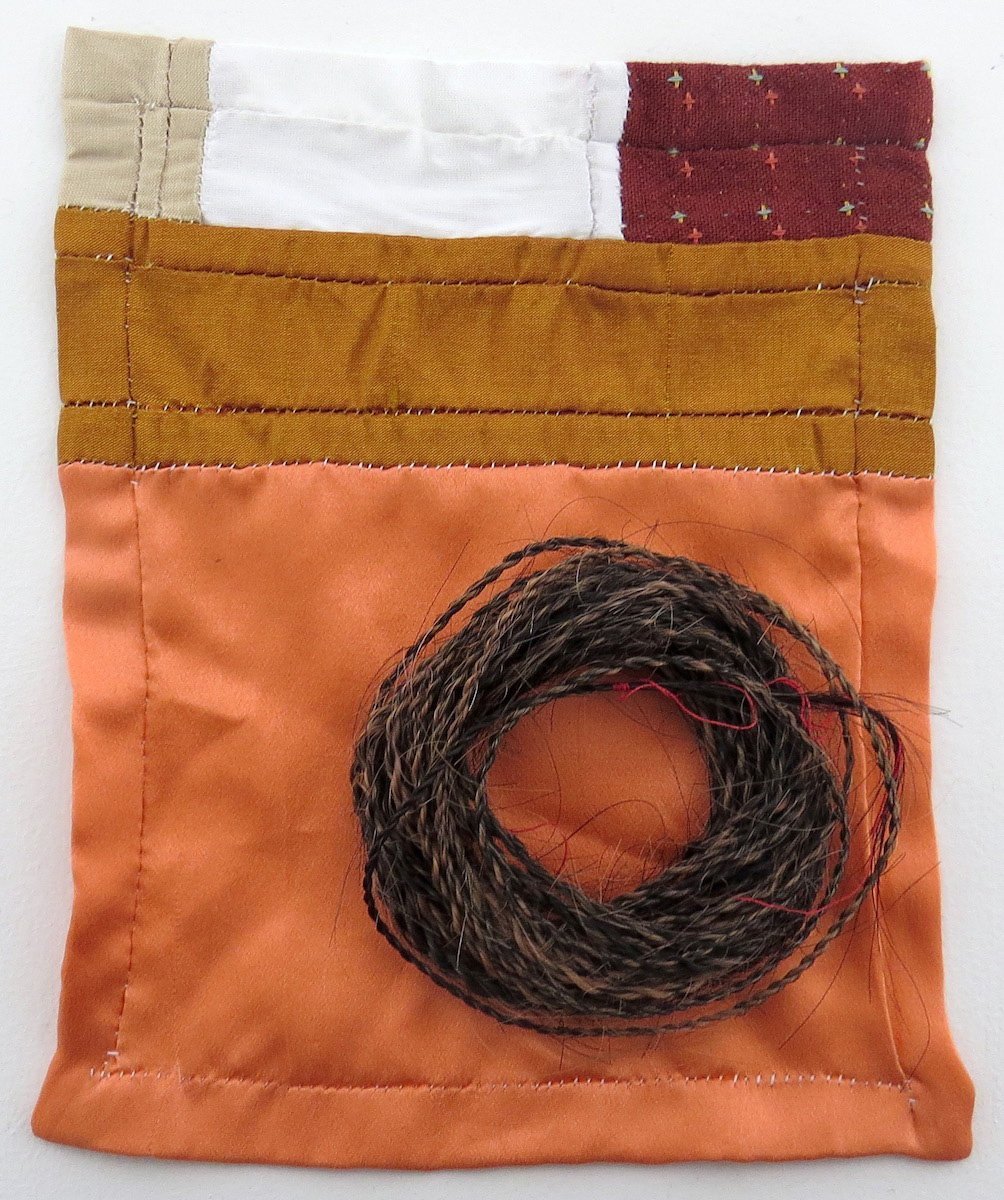
(Dunedin Public Art Gallery)
"In, on, over" is an intriguing array of abstract works from the Dunedin Public Art Gallery’s collection. The works have been chosen to present a cross-section of different styles of abstraction, from Gretchen Albrecht’s bright landscape-inspired work, which almost ventures into representationalism, to Don Driver’s wilfully surreal construction from oilcan, plastic bucket, and lobster.
The title of the exhibition is a prompt to think of the actions involved in the creation of an artwork, especially in relation to abstract art. To the untrained eye, an abstract piece can appear daunting or perplexing, as if thrown together without thought. Yet good abstract art is perhaps even more difficult to create than good representational work, since there is no visual peg for the viewer to directly hang their view of the piece on; the art has to be created entirely within the artist’s mind.
A wide variety of strands within abstraction have been touched upon in this exhibition, and the juxtapositions have enhanced the display. Julian Dashper’s rigid geometries contrast nicely with a gestural explosion of colour from Pat Hanly, which is enclosed within a rigid steel frame which is in itself an artwork (by Fiona Connor). Photographic and printed works by Adrienne Martyn and Wayne Barrar also complement each other nicely.

Graham Bennett returns with a powerful series of sculptures, drawings ,and photographs which make a pointed statement about the creeping destruction of New Zealand’s waterways.
Many of the pieces on display draw on paintings by medieval Dutch painter Hieronymus Bosch. Figures from Bosch’s painting The Garden of Earthly Delights have been co-opted to appear in bowl-like metal lakes which have been drained of water to leave only a rusty residue. Below these bowls are jars filled with polluted water from New Zealand lakes. Birds — matuku (bitterns) — feature in these sculptures. These early warnings of ecological disaster sit around the figures like waiting vultures. Bosch’s The Garden of Earthly Delights is the central panel of a triptych, sitting between Heaven and Hell. Bennett asks us to consider which direction we wish to head.
In other impressive works, the form of axes is subverted by their construction (including blade) from native timber, the handles and blades delicately carved in intricate patterns. Elsewhere, in Deception, the ecological message is driven home more explicitly. In it, a pair of scales features two delicately balanced hemispheres. In one, a naked woman stands knee-deep in life-giving water. In the other, the water is black as pitch, and the woman is replaced with a herd of cows.

"The body’s so rich, it admits plurality". Thus reads a fragment of a Kathy Acker’s poem which has been cut and pasted into a new form by Robyn Maree Pickens, the curator of "Body-Maker". This plurality lies at the heart of the exhibition, whether it is the dual forms of metal, new and tarnished, or the double-sidedness of gender flexibility, a subject which forms the inspiration for several of the works on display.
The pieces which lie closest to the centre of this gender-queering, and a highlight of the show, are several photographic portraits of trans women by Paul Johns which powerfully capture the subjects’ strength and calm acceptance of self. Close by are a group of hanging ceramic works by Taarn Scott, the glaze flecked with gold lustre. These abstract pieces are decidedly organic in form, as though they are frozen hearts, taken from a living, breathing body. Among the other work on display, Ed Richie’s small sculptures are perhaps the most captivating. His A Long Word For Silence pieces, arranged in two pairs, are small constructions of wood and metal, with miniature pine spheres seemingly teetering on the edge of vintage door locks. The composition of these pieces ensures that, while small and simple, they are imbued with a strong inherent tension. *Robyn Maree Pickens is an Art Scene reviewer.









!["Flux" featuring Portraits of Geoff Dixon (2021–2025), acrylic on paper [installation view], by...](https://www.odt.co.nz/sites/default/files/styles/odt_landscape_small_related_stories/public/story/2025/07/1_macleod.jpg?itok=2n5TYmHs)


